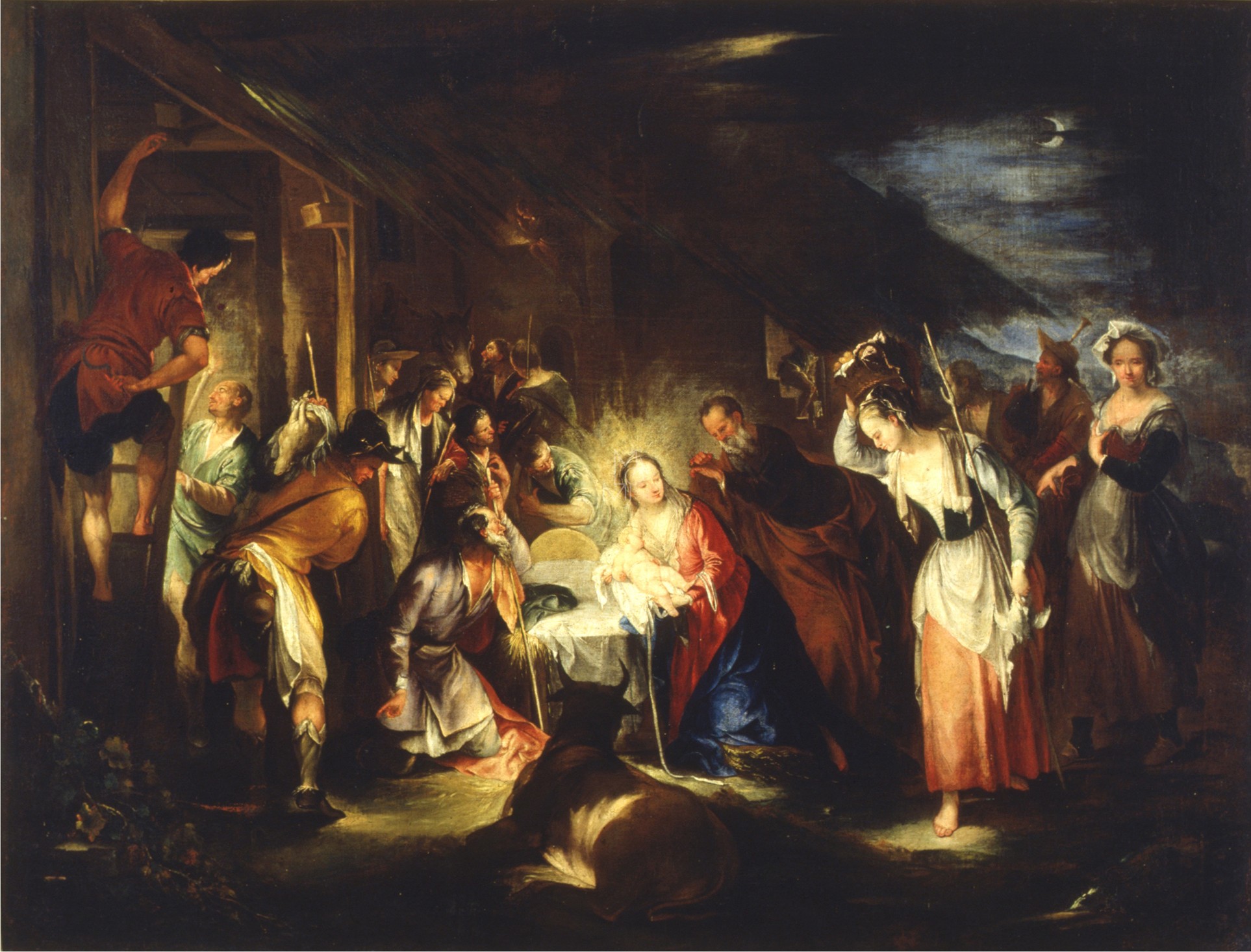BARTOLOMEO BARBIANI 1596–1645 Dated and signed 1622
Painting, oil on canvas, depicting 'Saint Jerome at Prayer
The figure of Jerome, Father and Doctor of the Church, belongs to that group of saints who, throughout the centuries, have always aroused admiration and devotion.The iconography of Jerome, in addition to presenting episodes linked to his hagiographic events, such as when he tames the lion, essentially follows two major patterns, which refer to each other: he is either penitent in the desert, depicted in the cave he had chosen as a hermitage, or he is portrayed in his study, bent over his books, immersed in reflection. At times the two iconographic schemes merge and Jerome penitent in the desert is occupied with his study work, also understood as a work of asceticism. As in the painting under study here Jerome penitent in the desert is depicted as a solitary old man, still looking vigorous despite the repeated penances to which he forced his body. He is presented half-clothed, with a red drape to summarily cover himself: the red colour evokes the tradition that recognised him as a cardinal of the Church. His iconographic attributes often include a skull next to him, indicating how the vanity of this world is destined to pass away. His gaze, on the contrary, is constantly turned towards the cross of Christ - a recurring iconographic element because only the cross is wisdom, as Saint Paul states. The landscape in which the scene of the penitent Jerome is set is usually arid, barren, a reminder of that desert in which the saint had taken refuge and which he had so well represented in his writings. The canvas with Saint Jerome is therefore sober, devoid of frills and elements that could distract from the figure of the saint. Jerome is kneeling pensively contemplating the crucifix, and has several books upturned in front of him in the foreground, one closed and the others leafy and worn, books that testify to his assiduous study. A cardinal's hat is also upturned in the middle of the books. The saint beats his chest with a stone, as penance. Jerome has a thick, long beard and is bald at the top of his head. At his feet crouches a lion. In the cavern where he stands, on the rocks that form a shelf behind him are other books and the skull, The painting is painted with vigorous brushstrokes and great compositional skill and is signed on the stone in the bottom left-hand corner 'Bartholom.s/Barbianus / Politianus/Pingebat / a. Dom./ MDCXXII'. This is a rare and valuable work by the Montepulciano painter Bartolomeo Barbiani, who was born in 1596 and died in 1645. Barbiani trained in the Roman workshop of Antonio Circignani known as il Pomarancio. He was active between Tuscany and Umbria, where he stayed for a long time. His apprenticeship at one of the liveliest workshops in the Eternal City well explains the persistence in his painting of late Mannerist elements, such as Federico Barocci's iridescent colours and Domenichino's classicist landscape, with some influences from the Caravaggesque and, above all, the Italian-French painters and the followers of Bartolomeo Manfredi.Between 1619 and 1628 he is documented in Todi, where he developed a figurative language that combines his original late Mannerist training with the novelties of Caravaggio's naturalism, which he learnt from his friend and collaborator Andrea Polinori and perhaps got to know directly during a trip to Rome.However, the artist also had the opportunity to meditate through the Umbrian trials of masters such as Rutilio Manetti, Orazio Riminaldi and Alessandro Turchi. In addition to religious themes, the artist painted subjects with animals, architectural perspectives, decorations, portraits, views and various other themes.The compositional scheme of the painting is very classical, with a low perspective point of view Barbiani's characteristic drapery, rich drapery and folds particularly stand out against the dark background and the beautiful red of the mantle lights up the entire canvas. The fine face of the saint reveals the painter's familiarity with the cosmopolitan Roman environment of his time. The artist's deference to established iconography and sacred texts is evident, but without slipping into Baroque emphasis. The light coming from the left and creating a strong chiaroscuro on Giroolamo and the skilfully arranged books sound like Barbiani's homage to Caravaggism and the still life tradition. The painting under study here is a new and important addition to Barbiani's catalogue, which is very rich after 1630 but rather lacking in the early years.
Bibliography: M. Castrichini, Bartolomeo Barbiani, Repertorio delle opere, in Pittura del Seicento in Umbria, Ferraù Fenzoni, Andrea Polinori, Bartolomeo Barbiani, edited by F. Todini, Todi 1990
Restorations
Dimensions in centimetres
Length
Depth
Height
